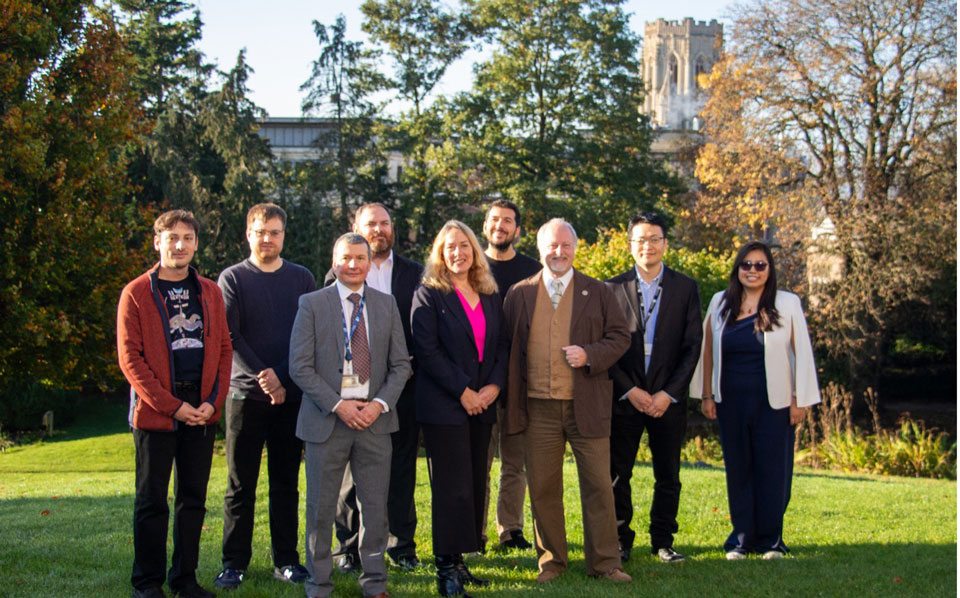News and Events
- Professor Andrew Keane elevated to IEEE Fellow
- UCD Engineering Spin-out Secures €6 Million to Accelerate Development of Groundbreaking Blood Flow Tech
- CDIC Automotive Design Competition 2024
- Teaching and Learning Awards
- Aisling Ní Annaidh recognised as a pioneer in her field through an ERC Consolidator Award
- Highly Cited: UCD researchers named amongst 2024’s most influential
- ESTEEM Graduate Programme
- Scientists’ next-generation space materials blast off for tests on ISS
- Competition! Celebrating John Stewart Bell’s Legacy
- Minister O’Donovan announces €26million for 40 research projects
- Engineering Class of 1958
- Professor Anding Zhu elected IEEE MTT-S President
- Bridges and Bytes – Launching the Student Voice on AI and Assessment
- European Research Council Funds Cutting-Edge Irish Research into Microplastics and Traumatic Brain Injury
- Professor Finola O'Kane appointed as a Senior Fellow at Dumbarton Oaks
- SBFE research fellow Xiaohui Lin receives the MSCA DOROTHY COFUND award
- Upskill with UCD’s engineering micro-credentials
- Minister O’Donovan announces funding boost for early career researchers
- Recent Lab visit by UCD Engineering & Architecture to Sheffield University Diamond Centre
- UCD Stormwater Runoff Research featured in Nicola Haines Team
- Madeleine Lowery among UCD Researchers recognised in SFI Frontiers for the Future Awards
- UCD’s LaNua Medical Wins Big Ideas Award at Enterprise Ireland’s Start-Up Day 2024
- Robotics Competition
- Congratulations to All the Winners of this years NovaUCD Awards
- Irish National Doctoral Research Cohort on Floating Offshore Wind Dynamic Cables is formed
- UCD and Northeastern University extend and deepen long-standing partnership with five collaborative research projects
- EPA announces €14.3M in new research funding
- Arup Scholarship Awards 2024
- UCD names new Vice-President for Equality, Diversity and Inclusion
- Project promoting safe staffing in the healthcare system wins UCD Research Impact Competition
- VOICE Project Launches to Shape Tomorrow's Sustainability
- Archives
Scientists’ next-generation space materials blast off for tests on ISS
Tuesday, 5 November, 2024

UCD’S Prof Kate Robson Brown among team launching low Earth orbit experiments to test materials to build future space stations or spacecraft for interplanetary travel.
A new generation of space materials left Earth this morning as they head to the International Space Station (ISS) to undergo testing in the brutal conditions of low Earth orbit. Developed at the University of Bristol, these high-performance materials could be used to build future space stations, spacecraft for interplanetary travel or a new ISS.
They will be placed on the Bartolomeo platform, located on the front of the ISS, where they will orbit Earth up to 9,000 times over the next 12 to 18 months at speeds of 17,000 mph. The carbon fibre reinforced composites will need to survive temperatures between -150ºC and +120ºC, space debris travelling seven times faster than a bullet, severe electromagnetic radiation, high vacuum and atomic oxygen, which erodes even the toughest materials.
Leading the project, Professor Ian Hamerton, Professor of Polymers and Sustainable Composites in the University of Bristol’s world-leading Bristol Composites Institute, said: “Space is the most challenging environment for which to design new materials. You’re pitting your materials expertise, skills and ingenuity against extremes of temperature, mechanical stress, radiation, high speed impacts and more. Any one of those might be difficult, and, unfortunately, gaining access to repair them is not an easy option, so the materials we build must survive without maintenance. The opportunity to test our materials in the proving ground of space is priceless and will help our University of Bristol scientists on the ground improve fibre-reinforced materials for next-generation space missions.”
During the campaign, real-time mass loss data will be collected to assess how the materials perform, and these will be used to validate analytical models currently being developed within a PhD project to predict the lifetime of composites deployed in LEO.
Professor Kate Robson Brown, formerly University of Bristol and now Professor at UCD School Mechanical and Materials Engineering and UCD Vice-President for Research, Innovation and Impact, leads the development of these computational models. She commented: “After nearly five years of research to develop novel composite materials for space applications it is very exciting to see our experiment launch to the International Space Station.
“I am proud to be part of this mission, and to be working with the mulltidisciplinary and multisector research team to deliver integrated real world and digital testing for innovative materials which will help to drive growth in the new space economy. This mission also demonstrates how space research funding creates career changing opportunities for early career researchers and PhD students in a sector of huge value to both Ireland and the UK.”
After a year or more of exposure in space, the samples will be returned to Earth, allowing the scientists to thoroughly investigate and fully understand the effects of the space environment on the materials and validate the newly-developed predictive models.
The launch represents the culmination of over four years of intensive research to develop new materials for the space environment as part of the European Space Agency’s (ESA) Euro Materials Ageing (EMA) mission. BCI was one of 15 teams selected for the project after a rigorous multi-stage peer review process. The EMA experimental platform (SESAME - Scientific Exploration Subsurface Access Mechanism for Europa), developed by the French Space Agency (CNES) and manufactured by COMAT, will be deployed by a robotic arm on the Bartolomeo platform(opens in a new window)designed and operated by Airbus, which is located on the front of the ISS.